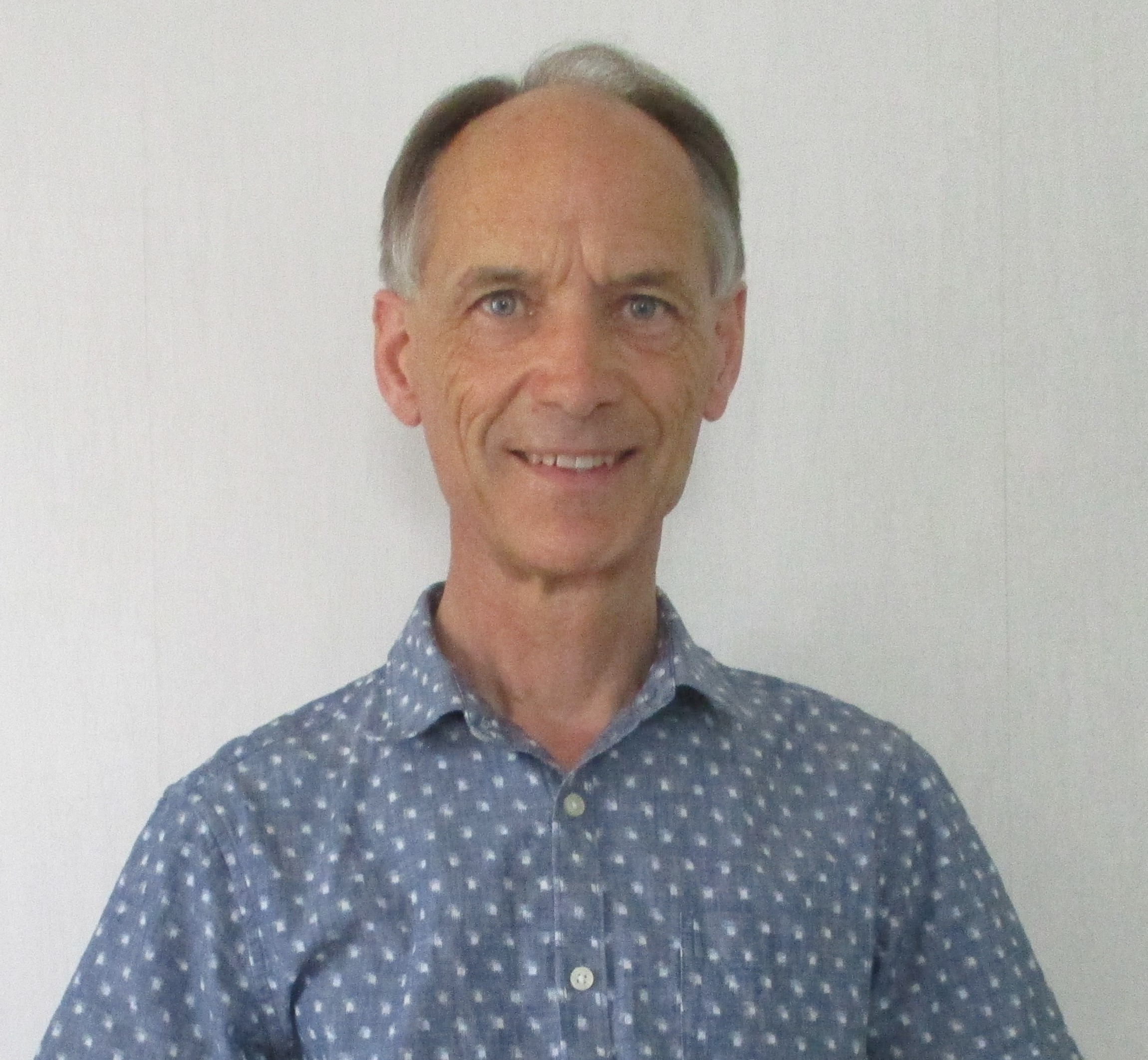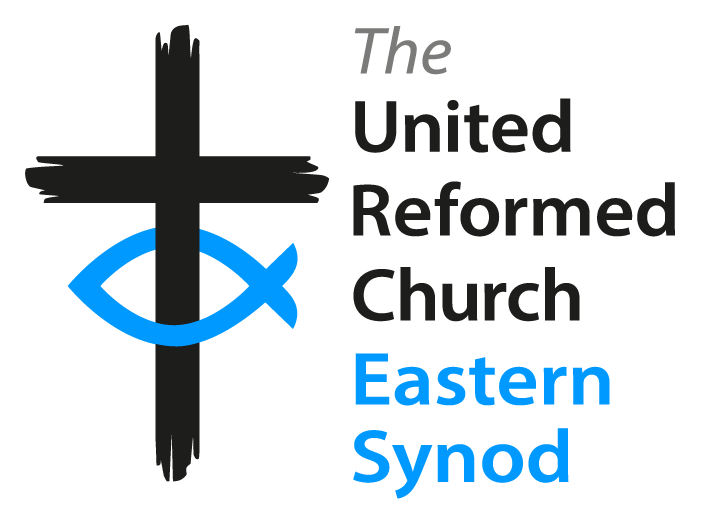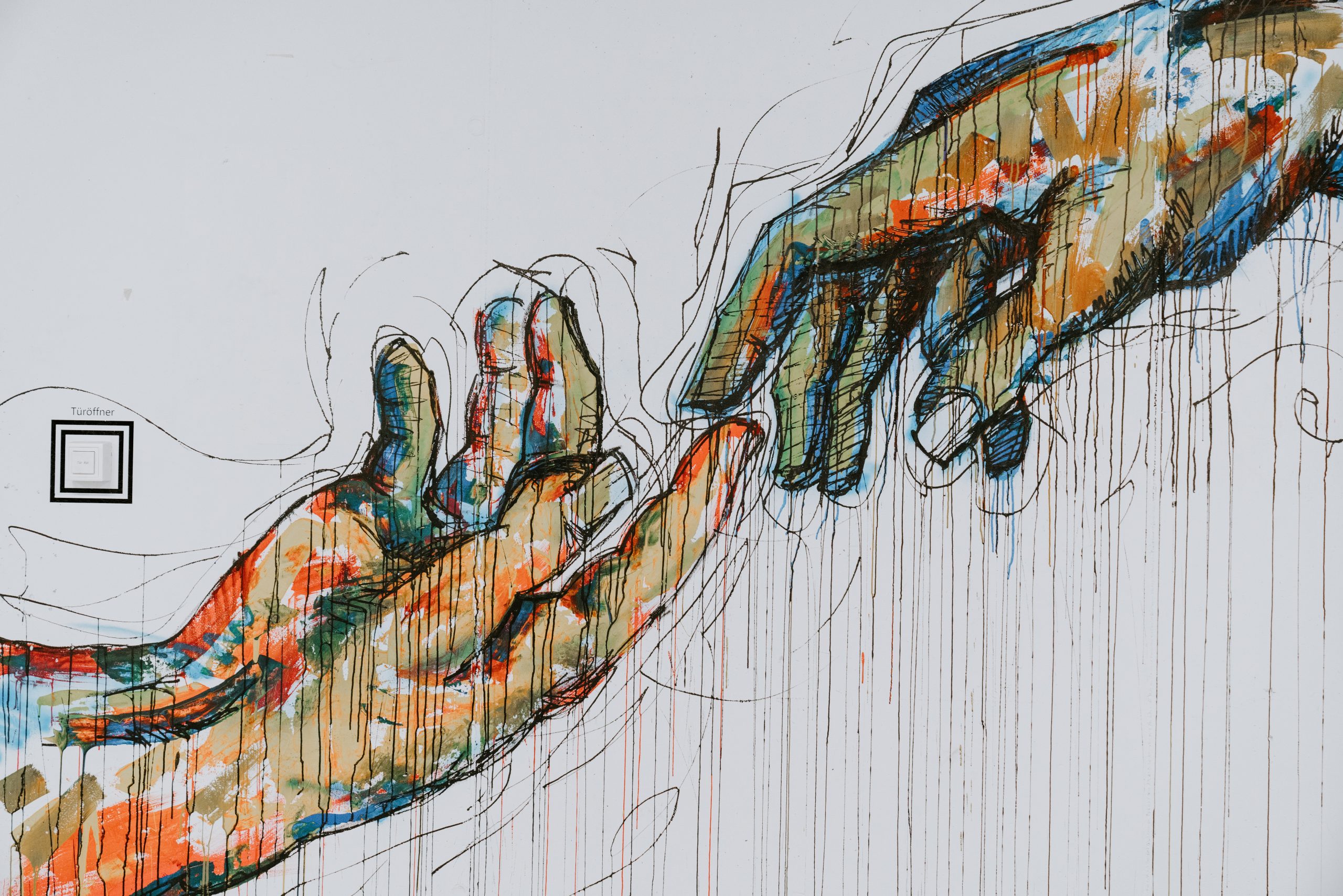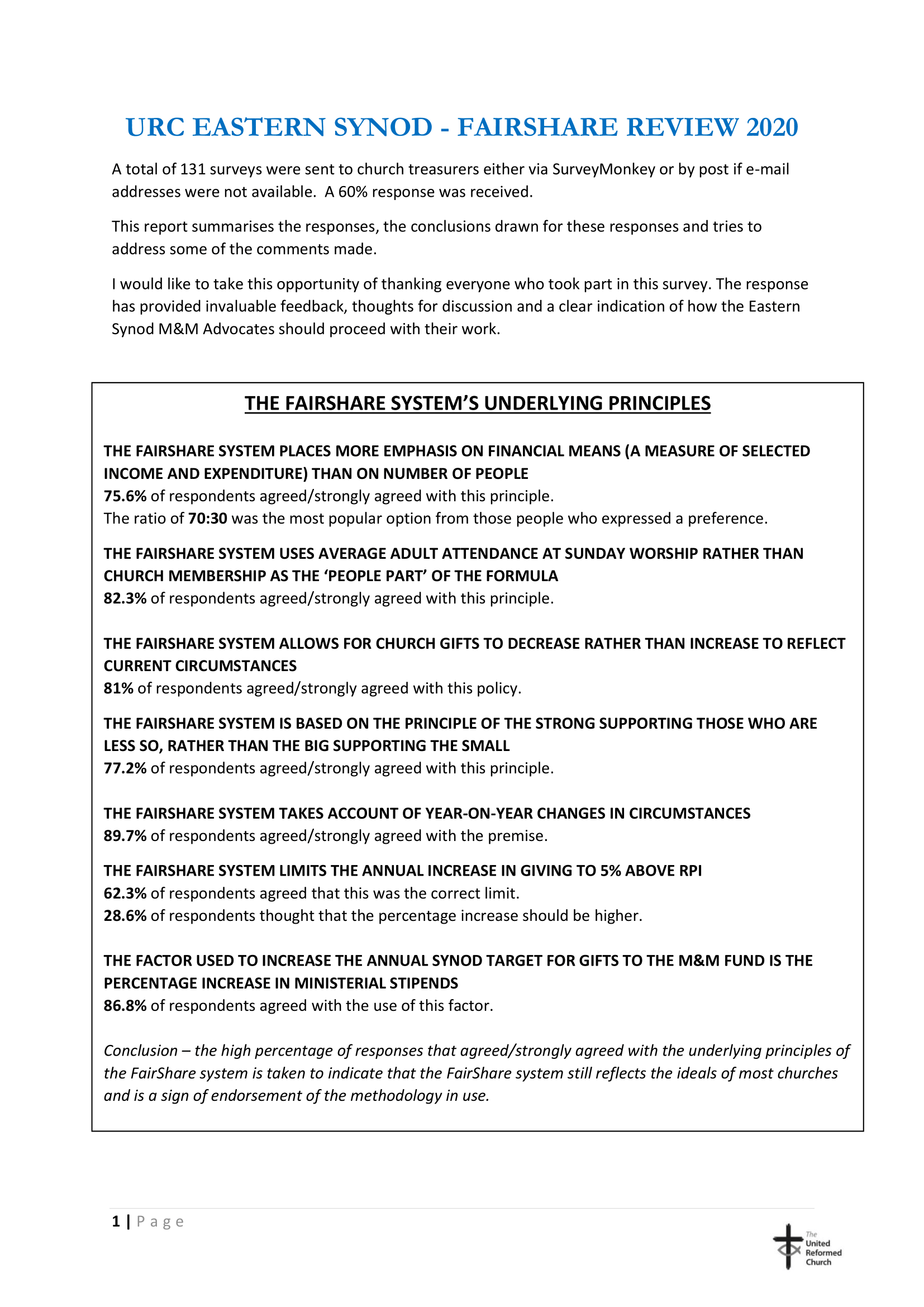Ministry and Mission Fund
The Ministry and Mission Fund is the financial lifeblood of the United Reformed Church.
The way that the Fund is run is governed by the Plan for Partnership. This was first approved by General Assembly in 1980 and has been updated from time to time since. Amongst other things the Plan for Partnership defines that, “The whole ministry of the URC is to be made available to the whole of the Church, and the financial responsibility for this ministry is to be shared throughout the whole of the Church.” Thus contributions do not relate to the amount of ministerial time received; or, in other words, ‘We don’t pay for what we get, we give that all might receive.
At a national level of every £1 that the URC spends from the M&M fund, 85p funds ministers’ stipends and training. Less than 7p of that £1 is used for the essential work of finance, administration and governance. Moreover, 95p of every £1 that is received into the M&M Fund comes from local church contributions. Thus, church gifts provide for the URC’s Ministry and Mission.

Ministry and Mission Advocates
The Synod M&M Advocate serves on the Synod Resources Committee and liaises between Church House and the Area Partnership M&M Advocates regarding contributions from individual churches to the Ministry and Mission Fund.
A key feature of the Synod M&M Advocates role is to encourage churches to take ownership of the M&M Fund and to see the individual church as part of the wider body of the URC and foster an ethos of joyful giving in the spirit of partnership.
The Synod M&M Advocate is Alan Clifton from Kings Road URC, Southend.
The Area Partnership M&M Advocates are the interface with local churches regarding the Ministry and Mission Fund. They help to explain the FairShare System that is used by the Eastern Synod in calculating church gifts to central funds, collect the necessary information needed from church treasurers and agree the amount of gifts that are pledged by the churches. They are the first point of call if a church has any questions or concerns regarding giving to the Ministry and Mission Fund.

Downloads
Further details about the FairShare system, how it affects Local Ecumenical Partnerships and United Churches, and the Ministry and Mission Fund are available in the documents that are available for download. Area Partnership M&M Advocates will be happy to help answer any other queries.
The FairShare System asks each church to submit selected financial details to their Area Partnership M&M Advocate on a ‘FairShare Return’. The information on the form is used by the Synod M&M Advocate to calculate a church’s contribution to the M&M Fund. 70% of a church’s contribution is based on financial resources (The Pounds Part) and 30% on average adult attendance at Sunday worship (The People Part). The sum of the Pounds Part and the People Part is the ‘FairShare’ figure but the contribution requested is capped so as to never be greater than 5% + RPI above current contribution. No church can work out its own M&M contribution, as the figures from all of the churches are needed. In essence every church is ‘measured’ using the same assessment of financial resources (broadly defined as unrestricted income less specified) and attendance. These are then used as factors so that every church is treated according to the same criteria.
The Area Partnership M&M Advocate, who may make further adjustments in the light of local knowledge, will inform churches of both the ‘FairShare’ figure (for information only) and the adjusted figure, that could be lower or higher than FairShare. In the light of these two figures, churches are asked to reflect on them, and on their current situation, and to let the Area Partnership M&M Advocate know if they are able to meet the requested adjusted amount. It may be that some churches feel in a position to offer more whilst others feel that they will struggle to meet their assessment. If the latter is the case then discussion needs to take place with the Area Partnership M&M Advocate.
Integral to the whole process of this system is that it aims to be a consultative procedure. The raw numbers from churches may be objective but they do not take into account local knowledge and situations. That is why discussion and sharing together is so important.
For many years, contributions to the M&M Fund were established within Districts with each District in the Synod using a different system; most such systems relied on membership as a major factor. With the cessation of Districts, the Synod was faced with the challenge of moving to a unified system. It also became evident that many churches were profoundly unhappy about the use of membership figures in calculating contributions. A system in which the large support the small does not take account of the ability of churches to give. The Ministry and Mission Resources Committee (which now no longer exists) was directed to find a system whereby the strong support the weak, which reflects ability to give (including demographic influences), takes account of year-on-year changes in circumstances, is easy to calculate and manage, is flexible and involves no sudden large year changes. No mean feat!
Through a process of extensive research, discussion and debate the MMRC developed the recommendation of a FairShare System. This system was trialled in 2008 and the process, data collected and resultant figures were scrutinised by the Area Partnership M&M Advocates so that the system could be fine-tuned and any potential problems identified and dealt with. In October 2008 Synod Council unanimously agreed the continued development of the FairShare System with it being used for the first time in 2009 to determine contributions in 2010. Continued development means that the system is not fixed in stone but can be adapted and modified (with Synod’s approval) to be as effective as possible and meet changing needs and circumstances.
The FairShare system was developed in 2008 and the history of how this came about is shown below In 2020 a survey was carried out to ascertain whether the underlying principles of the system, which were based on feedback from churches when it was developed twelve years previously, continued to reflect the views of churches in 2020. The survey was sent to all church treasurers. The results of the survey are in the document above/next to this text.
Stewardship
STEWARDSHIPis the response to God's giving in Jesus Christ.
STEWARDSHIPis about giving, about giving ourselves, without reserve, to achieve God's purposes of love
STEWARDSHIPacknowledges that all we have first comes from God
STEWARDSHIPthen poses the question how do we respond and use the gifts that He has given us?
STEWARDSHIPidentifies ten main areas relating to God's gifts and our responses.
GOD GIVESus all the resources and abilities to make money
OUR RESPONSE ISto use all of our money as responsible stewards
Attitudes toFINANCIAL GIVINGare part of a wider theological understanding.
The United Reformed Church has some helpful information and resources about Stewardship. Why not have a look at them here?
If you’re interested in learning more about Stewardship, as an individual or a church, please get in touch!


